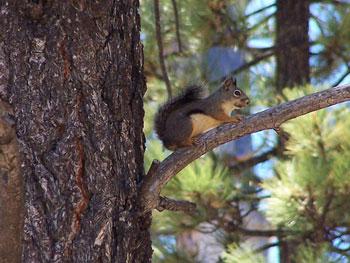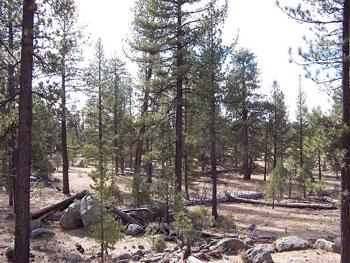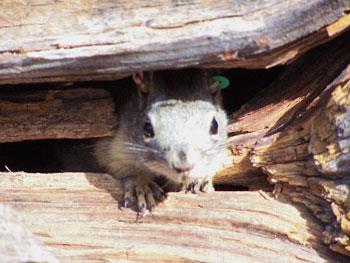Nicolas Ramos-Lara
Past Graduate Student

-
ENR2
1064 E Lowell St
Tucson, AZ 85719
Ecology of the endemic Mearns’s squirrel (Tamiasciurus mearnsi) in Baja California, Mexico
Major Questions
1. What is the current situation of the arboreal squirrels of Mexico (review chapter)
2. Do Mearns’s squirrels have specific habitat requirements for nesting?
3. Do home-range dynamics and habitat use of Mearns’s squirrels differ from other congeners?
4. Do life-history and behavioral tactics of Mearns’s squirrels differ from other congeners?
Major Findings
1. In Mexico, there are 14 recognized species of arboreal squirrels of which four are endemic, with the states of Chiapas and San Luis Potosi possessing the greatest diversity.
2. Presently, all species are listed under some category of risk by IUCN, seven by Mexico’s SEMARNAT, and only one by CITES.
3. Our literature survey yielded 37 publications revealing that a dearth of scientific information still exists on the arboreal squirrels of Mexico.
4. States with a greater diversity of arboreal squirrels also have higher annual wood productions, which may pose a serious threat to their persistence.
5. Mearns’s squirrels rely primarily on tree cavities for nests, with nest tree species, nest tree condition, nest tree size (DBH), canopy cover, and occurrence of white firs (Abies concolor) as important characteristics of the habitat for nesting.
6. Without larderhoards (middens), home-range dynamics of Mearns’s squirrels are similar to nonterritorial squirrels of the genus Sciurus, suggesting that middens played an important role in the evolution of territoriality in Tamiasciurus.
7. Using satellite imagery, I found that remote areas in the Sierra de San Pedro Mártir appear to have suitable habitat for the species.
8. Survival of adult Mearns’s squirrels was influenced by sex and body mass.
9. Mearns’s squirrels are heavier and apparently also larger than other congeners, possibly in part as an adaptation to feed on large pine cones (Pinus).
10. Interyear variation in weather and food supply strongly influenced fitness-related traits and behavior of Mearns’s squirrels.
Publications
Ramos-Lara, N., and J. L. Koprowski. 2015. Spacing behavior of a non-larder-hoarding Tamiasciurus: a study of Mearns's squirrels in xeric coniferous forests. Ethology 121: 196-205. PDF of Article
Ramos-Lara, N., J. L. Koprowski, and D. E. Swann. 2013. Nest-site characteristics of the montane endemic Mearns's squirrel (Tamiasciurus mearnsi): an obligate cavity-nester? Journal of Mammalogy 94:50-58. PDF of Article
Ramos-Lara, N., and J.L. Koprowski. 2012. Communal nesting behavior in Mearns’s squirrels (Tamiasciurus mearnsi). Southwestern Naturalist 57: 195-225. PDF of Article
Where is Nicolás Now?
Postdoctoral Researcher
Universidad Autónoma de Querétaro
Querétaro, Mexico




